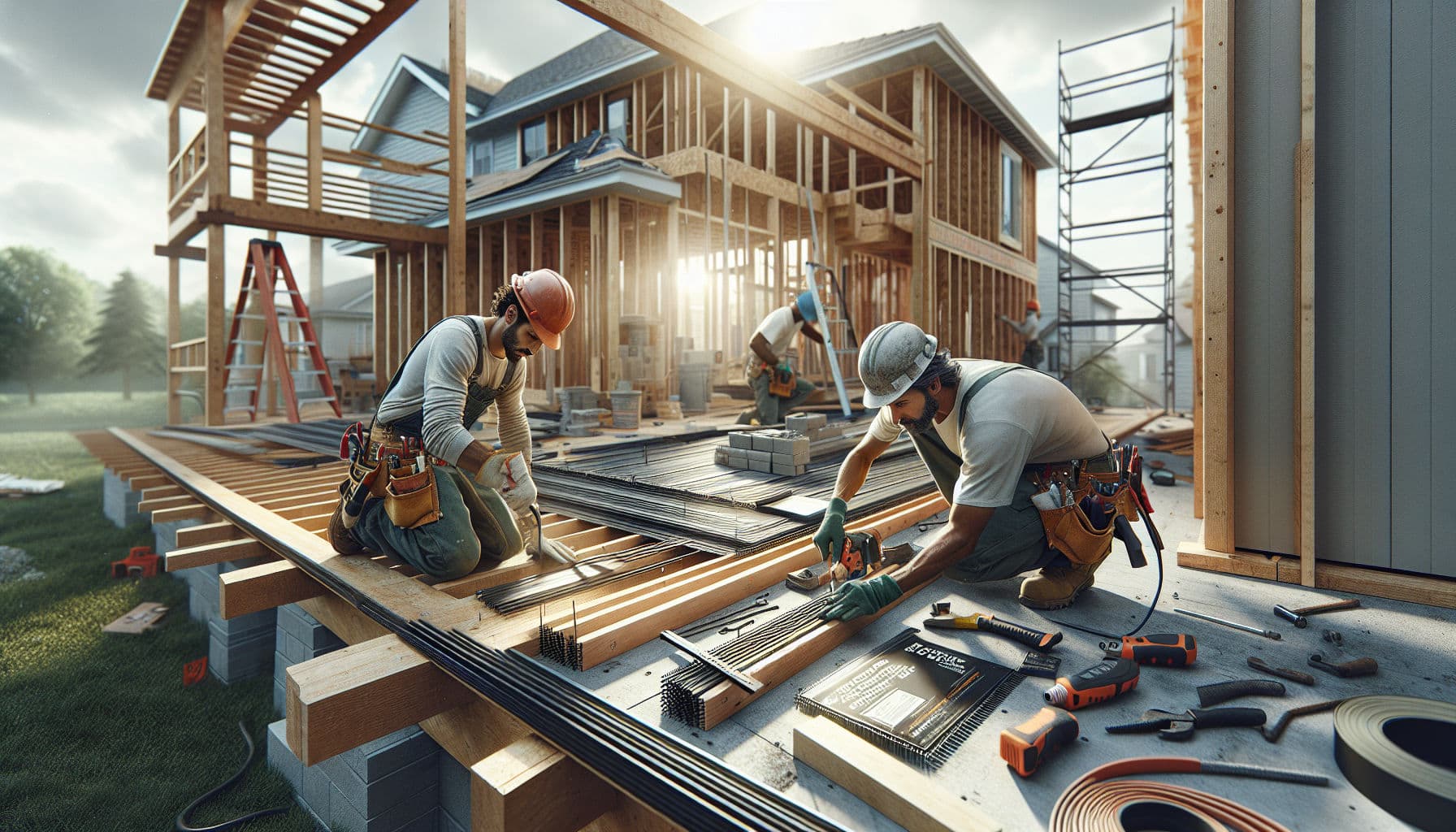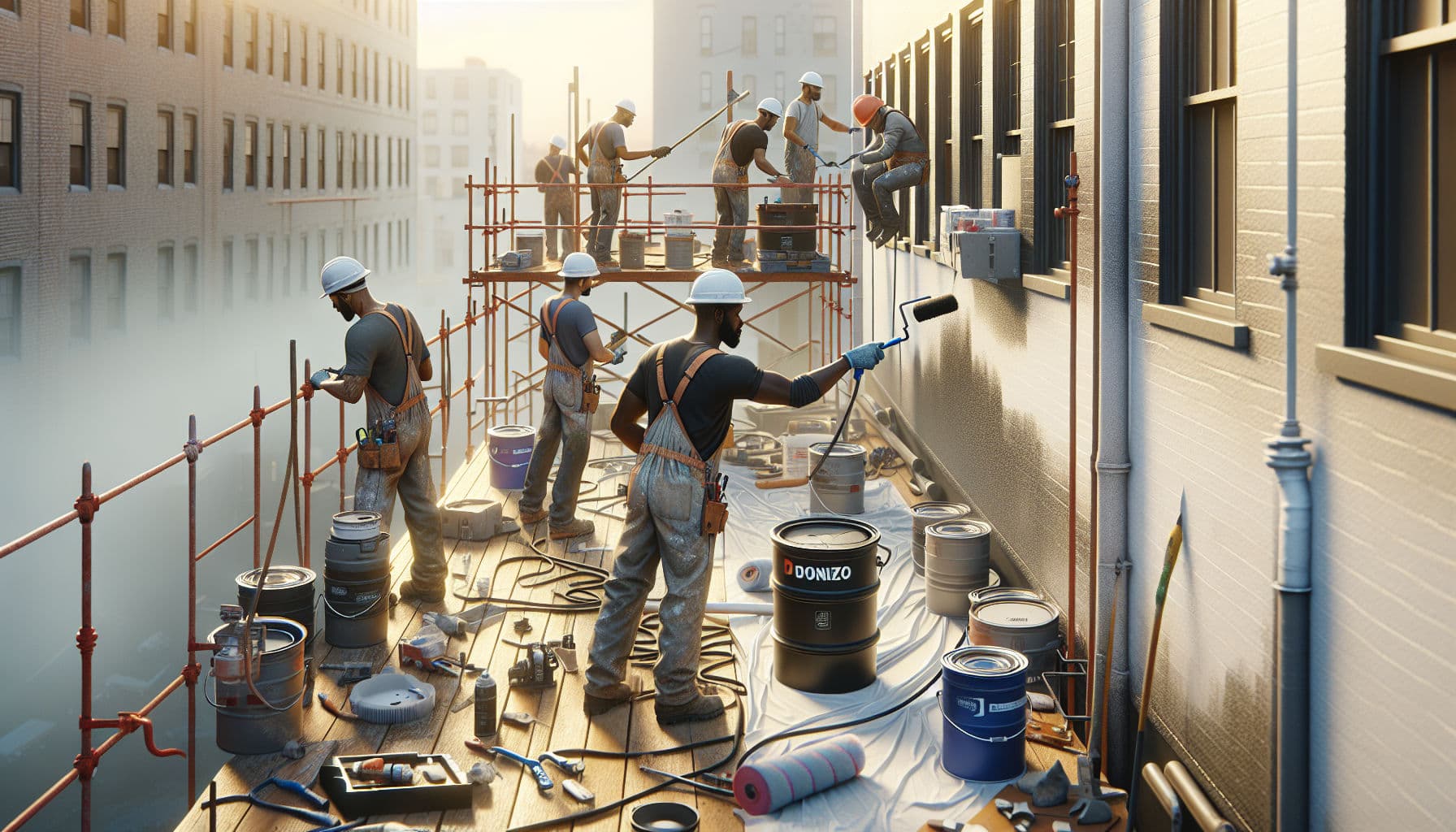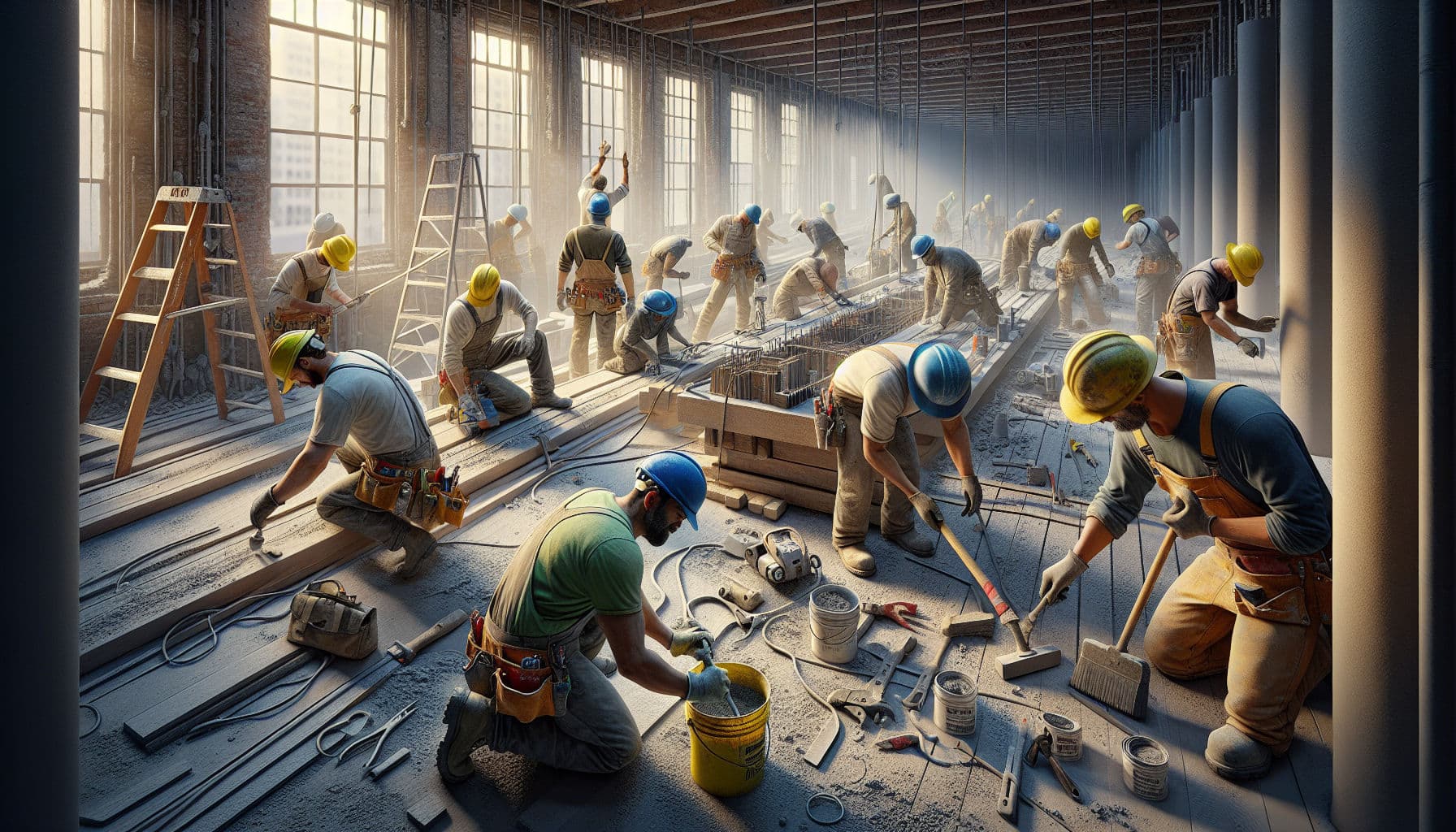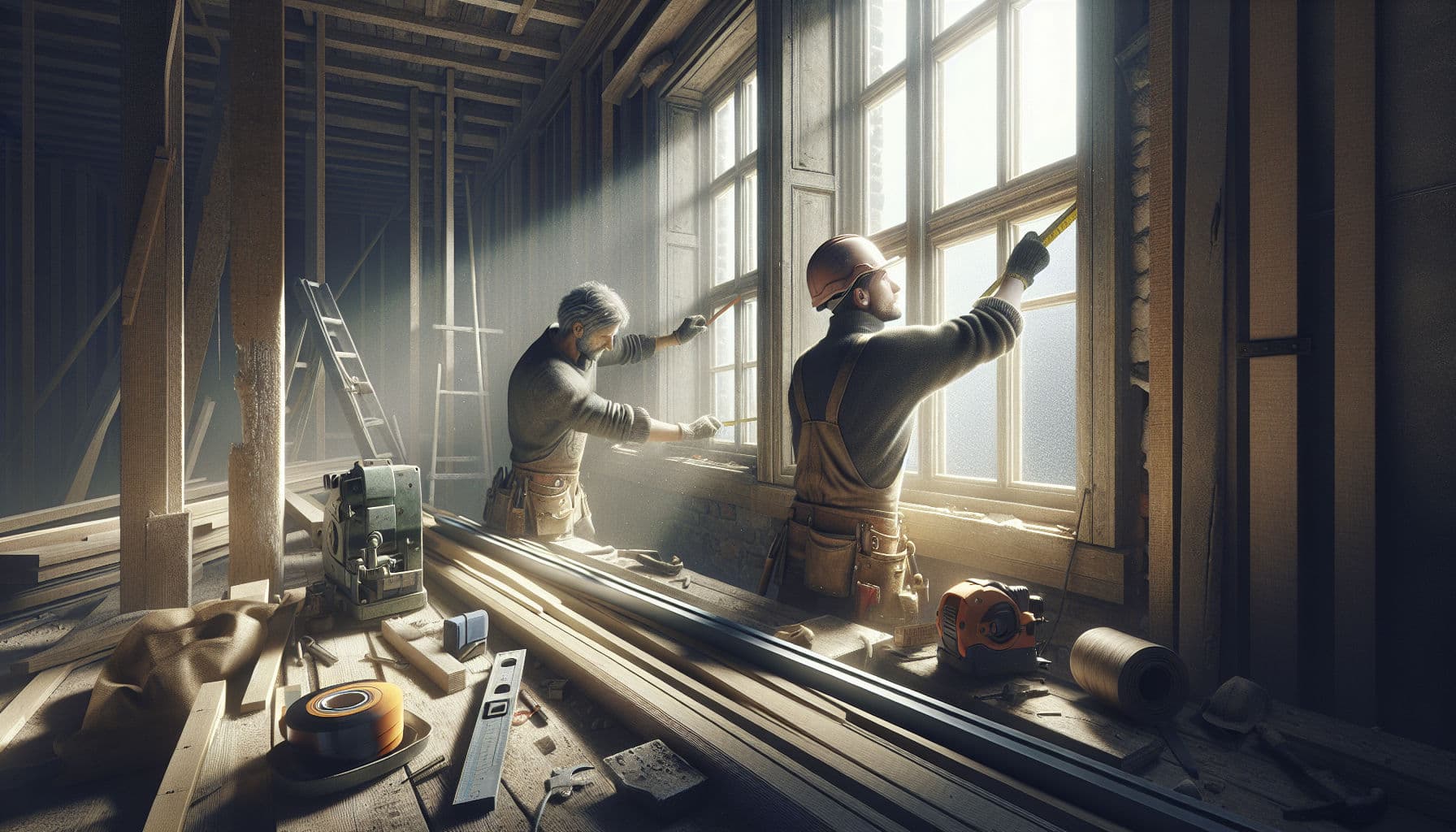Concrete Driveways That Last: Pro Guide 2025
Field-tested specs, joints, drainage, and curing to build 25+ year concrete driveways. Costs, checklists, and real examples for small teams.
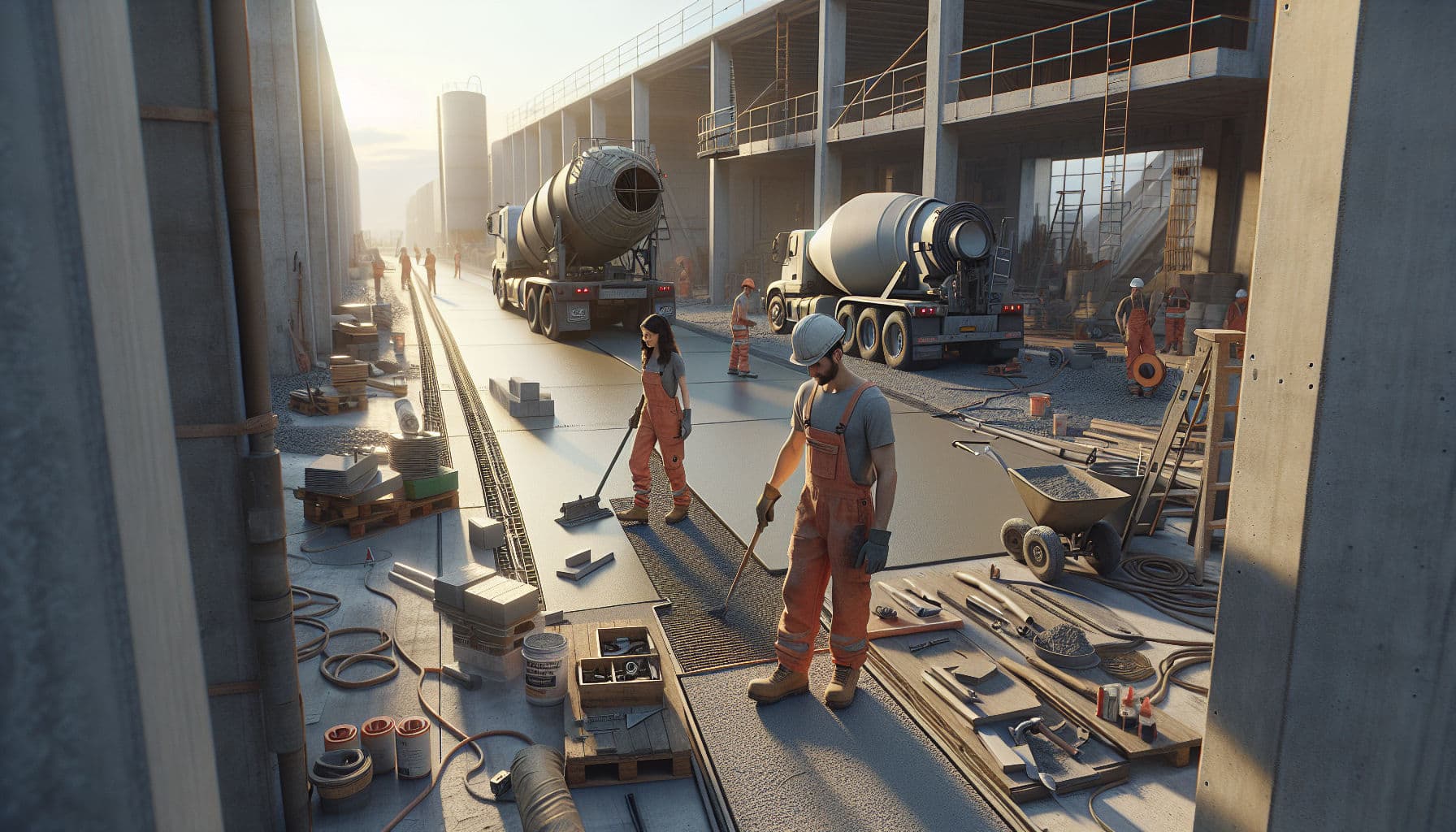
Introduction
What makes a concrete driveway survive 25+ years instead of failing in five? For most replacements, the culprits are predictable: weak subgrade, wrong mix, bad joints, and poor curing. This guide shows why these failures happen and how to prevent them with clear specs, simple checks, and realistic costs. You’ll get a practical, field-tested workflow you can use tomorrow—from subgrade prep to final broom finish—and a proposal structure you can generate in minutes with Donizo.
Key Takeaways
- Specify 4–8 in compacted granular base at ≥95% Standard Proctor and a 1.5–2% slope away from structures; most early failures start below the slab.
- For freeze–thaw regions, use 4,000–4,500 psi concrete, 5–7% air, and w/c ≤0.45 per ACI/PCA guidance; sawcut joints to 1/4 slab depth within the 6–12 hour window.
- Control joints at 24–36× slab thickness (inches) prevent random cracking; isolation joints at garage aprons, curbs, and drains are non-negotiable.
- Typical 2025 installed cost: $10–18/ft² (tear-out +$2–4/ft²; rebar grid +$1–2/ft²). Clear inclusions/exclusions reduce scope creep and call-backs.
- Contractors using voice-to-proposal tools like Donizo often cut quoting time by 30–60 minutes per job and reclaim 2–3 hours weekly across small pours.
Table of Contents
- Design And Subgrade: The Foundation
- Mix Design And Durability
- Jointing And Reinforcement
- Placement, Finishing, And Curing
- Scope, Pricing, And Client Expectations
- Frequently Asked Questions
- Conclusion
Design And Subgrade: The Foundation
According to ACI 330R guidance for parking lots and drives, the slab is only as good as the support beneath. Most premature cracking and settlement start in the subgrade and base.
Problem: Weak Subgrade And Poor Drainage
- Clay soils pump and heave; organic soils compress.
- Inadequate base and compaction lead to slab settlement and corner breaks.
- Flat grades trap water; freeze–thaw magnifies damage.
Solution: Stable, Drained Support
- Soil and base: Remove organics/topsoil. Place 4–8 in of well-graded granular base (e.g., 3/4 in minus), compacted to ≥95% Standard Proctor.
- Separation and stabilization: Use non-woven geotextile over soft clays or mixed fill to prevent fines migration.
- Slope and drainage: Provide 1.5–2% fall away from the house/garage (about 3/16–1/4 in per foot). Add a trench drain where grade constraints exist.
- Thickness: 4 in slab for passenger cars; 5–6 in where SUVs/box vans routinely park or at apron transitions.
Example
A 1,200 ft² driveway over high-plasticity clay received geotextile + 6 in base compacted to 95% Standard Proctor and a 2% slope to the street drain. After two winters, no corner breaks or settlement joints opened. Crew noted reduced pumping during heavy rains compared to neighboring drives.
Mix Design And Durability
Industry data shows surface scaling and pop-outs are strongly linked to high water–cement ratios, low air content, and early exposure to de-icers.
Problem: Wrong Mix For Climate And Use
- Non air-entrained concrete in freeze–thaw climates scales and spalls.
- High w/c (>0.50) raises permeability and winter damage risk.
- Overly wet slumps lead to shrinkage cracking and dusting.
Solution: Specify The Mix, Don’t Leave It To Chance
- Strength (f’c): 3,500–4,000 psi temperate; 4,000–4,500 psi freeze–thaw + de-icers.
- Air: 5–7% for freeze–thaw; 4–6% temperate.
- Water–cement ratio: ≤0.50 (temperate); ≤0.45 (freeze–thaw with salts).
- Slump: 3–5 in with plasticizer as needed; do not add water on site.
- Aggregate: 3/4 in nominal; avoid soft chert where pop-outs are common.
- Hot/cold weather: Use set retarder in hot, wind-borne conditions; accelerators (non-calcium chloride if steel present) for cold.
- De-icers: No salt the first winter; use sand if needed. Sealers after 28 days can help in harsh zones.
Climate Mix Snapshot
| Climate | f’c (psi) | Air (%) | w/c Max | Slump (in) | Notes |
|---|---|---|---|---|---|
| Temperate | 3,500 | 4–6 | 0.50 | 3–5 | Standard residential |
| Freeze–thaw + de-icers | 4,000–4,500 | 5–7 | 0.45 | 3–4 | Air-entrained; low permeability |
| Hot, dry, windy | 3,500–4,000 | 4–6 | 0.45–0.50 | 3–4 | Use retarder, wind breaks, fogging |
Example
A 900 ft² replacement that previously scaled at year two switched to 4,500 psi, 6% air, w/c 0.45 with a mid-range water reducer and strict “no water added” policy. The surface stayed intact through two winters with salted streets and homeowner sand only on the slab.
Jointing And Reinforcement
Research indicates most residential random cracking is preventable with correct joint layout and timing. Reinforcement controls crack width—not the existence of cracks.
Problem: Random Cracks And Curling
- Joints cut too late or too shallow lose control of shrinkage.
- Long panels without isolation at stress risers crack off corners.
- Wire mesh often sits at the bottom, providing little benefit.
Solution: Joint Early, Deep, And Often; Reinforce Intelligently
- Control joints: Spacing = 24–36× slab thickness (inches). Example: 4 in slab → 8–12 ft max. Depth = 1/4 slab thickness (1 in for 4 in slab).
- Timing: Sawcut in the 6–12 hour window after finishing (earlier with early-entry saws). Use the scratch test and footprint checks to confirm readiness.
- Isolation joints: At garage slab, curbs, drains, columns, and utility penetrations.
- Edges: Tool or saw a clean edge; add a 12–18 in wide #3 rebar strip at aprons or where vehicles turn sharply.
Reinforcement Options Compared
| Option | Material Cost (USD/ft²) | Crack Control | Labor Impact | Notes |
|---|---|---|---|---|
| None | $0.00 | None | Low | Joints must do all the work |
| Fiber (1.5–3.0 lb/yd³) | $0.25–0.45 | Plastic-shrinkage only | None | Does not replace joints or steel |
| 6x6 W1.4/W1.4 mesh | $0.40–0.80 | Moderate if mid-depth | Medium | Must be chaired; often ends at bottom |
| #3 rebar @ 18" each way | $1.00–1.80 | High (limits opening) | High | Use at aprons/heavy loads |
Example
A 50 ft × 20 ft driveway was jointed in a 10 ft grid, sawed at 8 hours to 1 in depth. Isolation joint installed at the garage apron with #3 rebar dowels and sleeve. Result: hairlines tracked joints; no mid-panel cracks at 12-month inspection.
Placement, Finishing, And Curing
According to best practices from ACI and PCA, most surface defects come from adding water, overworking cream, and inadequate curing.
Problem: Scaling, Dusting, And Map Cracking
- Water added at the slab surface weakens paste and raises w/c locally.
- Early troweling traps bleed water; late sawcuts miss the shrinkage window.
- No curing leads to rapid moisture loss, higher shrinkage, and surface weakness.
Solution: Control The Process, Not Just The Product
- Placement: Strike off, bull float once; do not rework the surface repeatedly.
- Finishing: Let bleed water evaporate; avoid steel trowel closes on exterior flatwork. Use a light broom finish for traction.
- Sawcut window: Typically 6–12 hours at 60–75°F; sooner with early-entry saws. Adjust for temperature and wind.
- Curing: Maintain moisture for 7 days (wet cure or ASTM C309 curing compound). Protect from traffic: foot traffic after 24–48 hours; cars after ~7 days; heavy trucks after 14–28 days depending on mix and temperature.
- Weather controls: Wind breaks or evaporation retarder in hot wind; insulated blankets in cold. Avoid placing on frozen base.
Example
A crew implemented a mandatory curing compound pass immediately after final broom and edge, plus taped perimeter to block homeowner entry for 72 hours. Call-backs for dusting and early tire marks dropped to near zero across a season of small pours.
Scope, Pricing, And Client Expectations
Clear inclusions and scheduling rules protect margins and prevent disputes.
Problem: Under-Scoped Bids And Thin Margins
- Hidden removal, soft spots, and drainage fixes erase profit.
- Vague jointing and curing clauses lead to unpaid extras.
- Slow proposals delay approvals and clog the calendar.
Solution: Standardize Scope And Price Transparently
- Typical 2025 costs: $10–18/ft² installed. Add-ons: tear-out/disposal +$2–4/ft²; 5 in thickness +$1–2/ft²; rebar grid +$1–2/ft²; trench drain +$35–60/linear ft.
- Inclusions: Thickness, base depth and compaction spec, joint layout, isolation joints, mix spec (f’c, air, w/c), broom finish, curing method, clean-up.
- Exclusions: Subsurface surprises beyond X in, utility repairs, permit/inspection fees, sealing, landscaping restoration beyond edging.
- Schedule: Weather contingency, curing/access times, first-winter de-icer policy.
Example Proposal Structure
- Site conditions summary (soil, drainage, access, utilities)
- Technical specs (base, mix, joints, reinforcement, curing)
- Layout sketch with joint grid
- Options (5 in slab, rebar grid, trench drain)
- Price breakdown and timeline
Using Donizo, contractors can speak site notes, attach photos, and generate a branded PDF proposal quickly via voice-to-proposal. Clients sign digitally with e-signature, and accepted proposals convert to invoices in one click. Teams report saving 30–60 minutes per driveway quote and regaining 2–3 hours weekly across multiple small pours. Donizo’s templates and, on the Autopilot plan, a margin estimator help standardize pricing and protect profit.
Frequently Asked Questions
How Thick Should A Residential Driveway Be?
For cars and light SUVs, 4 in is standard. Use 5–6 in at aprons, where heavy vehicles park, or on weaker subgrades. Tie thickness to base quality and expected loads.
What Joint Spacing Works Best?
Use 24–36× slab thickness (inches). For 4 in slabs, keep panels 8–12 ft. Cut 1/4 the slab depth, within the 6–12 hour window (earlier with early-entry saws).
Do Fibers Replace Rebar Or Joints?
No. Fibers reduce plastic-shrinkage cracking and help with impact resistance, but they do not replace control joints or steel where crack width control is needed (aprons, heavy loads).
When Can Vehicles Drive On The New Driveway?
At 70°F, allow ~7 days for passenger vehicles. In cooler weather or with higher strengths, adjust accordingly. Heavy trucks should wait 14–28 days.
Should I Seal The Driveway?
In freeze–thaw regions or de-icer exposure, consider a breathable, silane/siloxane sealer after 28 days. Regardless, avoid de-icing salts the first winter.
Conclusion
Long-lasting concrete driveways come from disciplined basics: compacted base (≥95% Standard Proctor), correct mix (strength, air, w/c), tight jointing (depth, timing, layout), and proper curing. Document these specs in every proposal, price the true scope, and set first-winter care expectations to prevent avoidable damage.
To speed the business side, use Donizo: speak site details and photos into voice-to-proposal, send a branded PDF, capture e-signatures, and convert approvals to invoices instantly. The result: fewer call-backs in the field and less time stuck at the desk.

